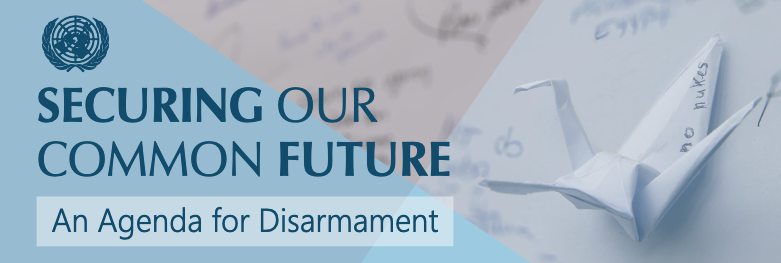UNODA Short Course: The United Nations Secretary-General’s Mechanism (UNSGM) for Investigation of Alleged Use of Chemical, Bacteriological (Biological) and Toxin Weapons
Overview
Together with nuclear and radiological weapons, biological and chemical weapons are considered weapons of mass destruction. These weapons can harm millions of civilians, jeopardize the natural environment, and fundamentally alter the world and the lives of future generations because of their catastrophic humanitarian effects. In 1925, the Protocol for the Prohibition of the Use in War of Asphyxiating, Poisonous or Other Gases, and of Bacteriological Methods of Warfare (Geneva Protocol) was signed banning the use of chemical and biological weapons in armed conflicts. However, the Protocol did not ban the development, production, or stockpiling of such weaponry. For that reason, it was later supplemented by the Biological Weapons Convention of 1972 and the Chemical Weapons Convention of 1993.
In UN General Assembly resolution 42/37C, adopted in 1987, the UN Secretary-General was requested, inter alia, to “carry out investigations in response to reports that may be brought to his attention by any Member State concerning the possible use of chemical and bacteriological (biological) or toxin weapons that may constitute a violation of the 1925 Geneva Protocol or other relevant rules of customary international law” and also to “develop further technical guidelines and procedures [...] for the timely and efficient investigation of such reports”. To this end, a roster was established composed of expert consultants, qualified experts and analytical laboratories that Member States can nominate and make available to support an investigation.
In this short course, trainees will learn about the threats posed by chemical and biological weapons, the international efforts to ban such weapons, and the verification regime in place. The course will introduce the UN Secretary-General’s Mechanism established to investigate cases when these weapons have been allegedly used, and will examine the UN documents and resolutions linked to the mechanism, its operational work, key partner organisations and past examples when the mechanism was implemented.
Objectives
Upon completion of this course, you will be able to:
- Explain the threats and current challenges posed by chemical and biological weapons;
- Justify the importance of international instruments in place to ban such weapons;
- Understand the key objectives of the establishment of the UN Secretary-General’s Mechanism and its operational work;
- Identify key organisations the mechanism regularly partners with; and
- Analyse past examples when the mechanism was implemented.
|
| Audience: The course is open to all interested audiences. |
|
| Components and Methodology: Each module takes approximately 20 minutes and can be completed at the learner’s own pace The course consists of three thematic modules:
The course is available in English and is held in the Disarmament Education Dashboard, thus participants need a computer or mobile device, with audio and reliable internet connection. No special software is required. |
|
| Certificate: Upon successful completion of thematic modules, including examination and course evaluation a certificate of completion will automatically be issued to the participant. |
Short course Series
The UN Office for Disarmament Affairs Short Course Series aims at making available quality education material on disarmament, arms control, non-proliferation and issues cross-cutting with security, such as gender and development. The courses are targeted for and available to the general public at UNODA’S globally accessible e-Learning platform disarmamenteducation.org.
In line with the UN Secretary-General’s Agenda for Disarmament this short-course series aims to contribute to the implementation of the Sustainable Development Goals.


